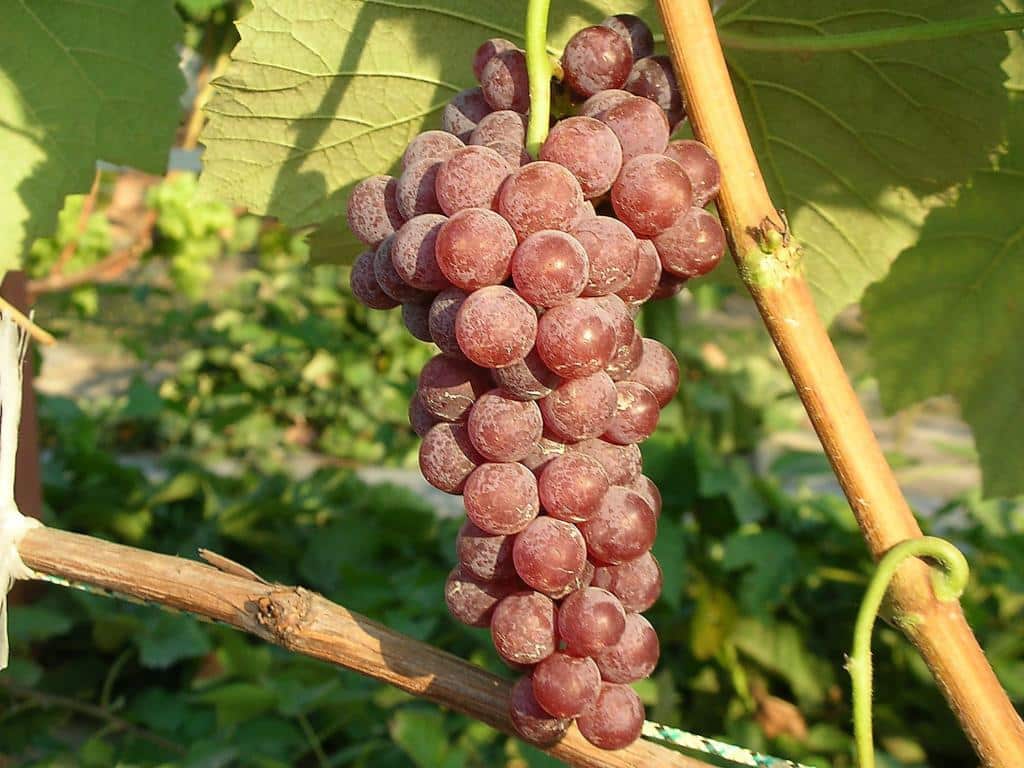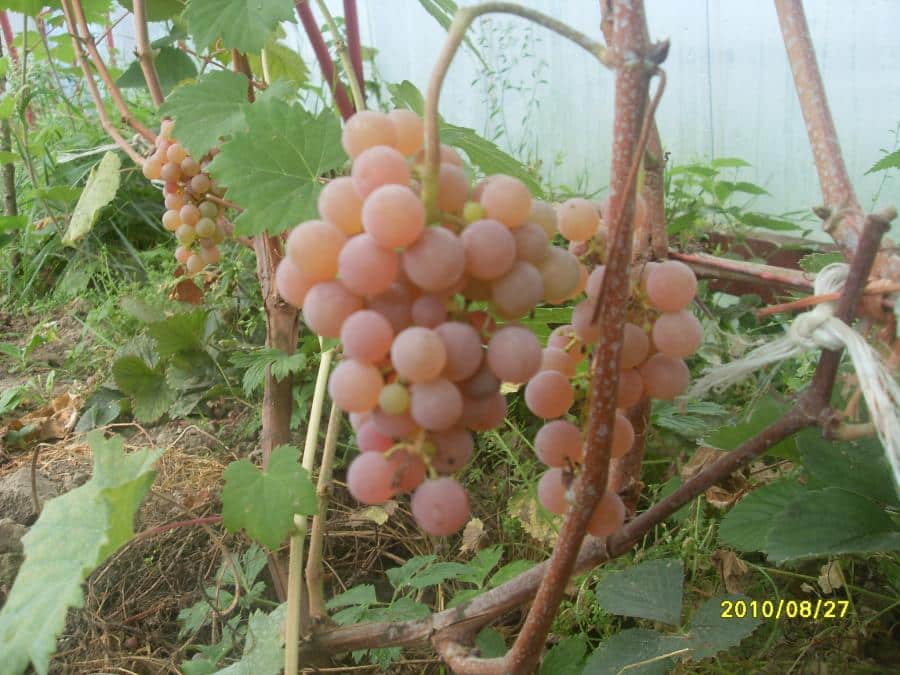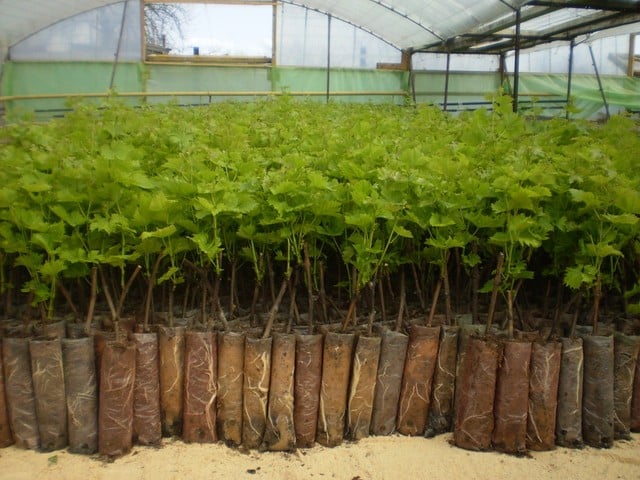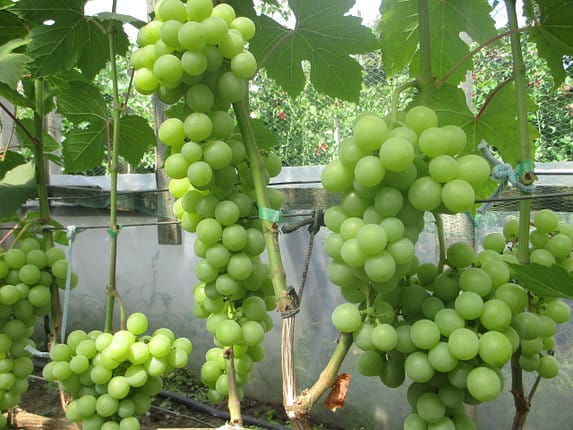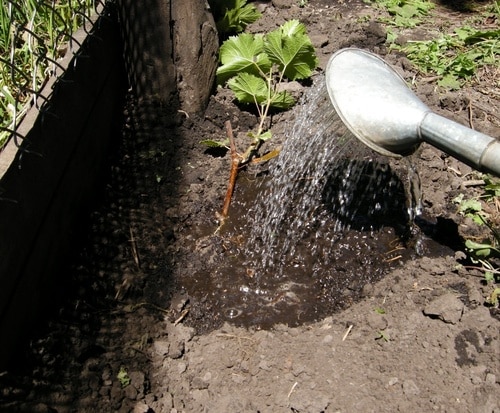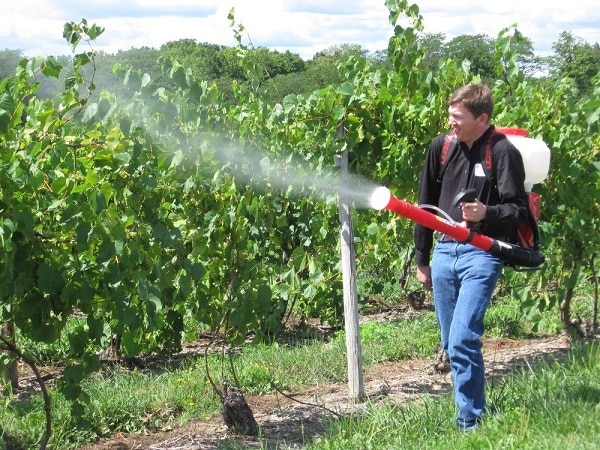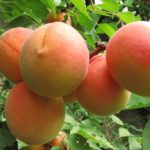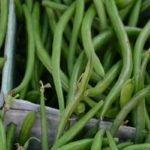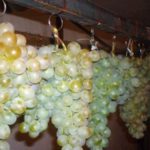The very name Reliance Pink Seedless contains the characteristics of the grape - Trust pink seedless. For winegrowers from the central part of Russia, other characteristics of the Reliance Pink Seedlis grape are no less important - its resistance to frost and disease, its rich fruity taste, unpretentiousness, and ease of adaptation to the planting site.
- Grape variety Relines Pink Seedlis
- Origin story
- Description
- Advantages
- Flaws
- Characteristics of the RPS variety
- Planting seedlings
- Preparing the planting hole
- Cultivation and care work
- Trimming the vine
- Watering
- Top dressing
- We protect the plant from diseases and pests
- Preparing for winter: wrapping and covering
- Harvesting and application
Grape variety Relines Pink Seedlis
American breeders completed work on developing the Reliance Pink Sildis variety in the 80s of the last century. It is this variety that perfectly combines frost resistance and the caramel flavor and pineapple-strawberry aftertaste characteristic of hot grape growing areas.
Origin story
In 1964, employees at the University of Arkansas were tasked with creating a frost-resistant, seedless grape variety. Already in 1968, seedlings of the Reliance variety, obtained by crossing Ontario and Suffolk Red, were sent to plantations in several northern states.
The tests lasted 8 years in the harshest climatic conditions of the agricultural regions of the United States.
Description
An early ripening variety, it takes 110-115 days from flowering to harvest. Relines belongs to the type of stenospermocarp grape varieties that do not have seeds. The weight of ripe conical bunches consisting of small berries is from 100 to 300 g. Under different climatic conditions of growth, the sugar content in the berries varies from 22 to 24% of the total mass. Crop losses are extremely small, not exceeding 15%. For information: Stenospermocarpy (stenospermocarpy) is a feature of varieties in which seeds are not formed due to inhibition of the function of ovule development after fertilization of inflorescences.
Relines have several subtypes:
- nutmeg;
- sultanas;
- dining room;
- dessert;
- universal.
This explains the difference in the description of taste and care methods.
Advantages
The variety, bred for cultivation in temperate climates, is resistant to frosts down to -34 °C and to major diseases of grape crops. Delicate thin skin and pleasant sweet taste make this grape variety a delicious dessert, and not just a raw material suitable for making wine.Reliance Pink Sildis is a high-yielding, early-ripening variety.
Flaws
In conditions of constant humidity, with predominantly cloudy weather and prolonged rains, the skin of the berries bursts. Increased lime content in the soil inhibits the development of grape seedlings of the Reliance Pink Seedless variety. In general, the variety has average disease resistance to mildew and oidium.
Characteristics of the RPS variety
The variety is self-pollinating, with a high yield class (up to 85%). Reliance Pink Sildis is distinguished by its powerful structure. Its bush is spreading with leaves of a light green shade, turning into a more saturated dark color in areas close to the vine.
Its berries are small (from 1.5 to 2.7 g in weight), cylindrical in shape. The taste is simultaneously reminiscent of strawberry and Duchess pear. During the tasting assessment, it received a fairly high score - 7.6, which is only 0.2 lower than the Kishmish variety.
Planting seedlings
Seedlings of the Relines Pink Sildis grape variety are suitable for planting in the spring in the last ten days of April - early May; in the fall, the planting period largely depends on the climate of the region (the time is chosen taking into account the onset of cold weather). Based on average statistical indicators, a day is selected after which cold weather should occur in 3-4 weeks. In most of the territories of central Russia, this corresponds to the end of October - beginning of November.
Attention! Sandy, sandy loam, clay and loamy soils in places not subject to flooding are optimal for growing grapes.
According to the signs of gardeners and gardeners, all plant growing work must be completed before November 14, a month after the Intercession of the Blessed Virgin Mary, a month and a half after Reporez and Gusefly.In many areas of a temperate continental climate, the first snowflakes are observed on this day, but before the onset of real frost there is time for the plant to take root.
When planting in spring, the seedlings are covered with a vapor-permeable film - this is protection from unplanned night frosts, which nature jokes about in the Moscow region and Leningrad region.
Preparing the planting hole
A spreading bush with a powerful root system requires a wide hole. A meter wide and deep are the recommended pit sizes for Reliance Pink Sildis grapes. The depth is based on the fact that almost a third will be occupied by the drainage layer - broken brick, gravel, sand. Considering the variety’s dislike for lime, crushed stone cannot be laid under the root system.
After planting, the plant is watered abundantly with warm water. Like all grape varieties, Reliance Pink Seedless does not tolerate watering with cold water.
Cultivation and care work
Reliance Pink Sidlis grapes must be planted in a place exposed to the sun, protected from the winds. Limestone areas are not suitable for growing this grape variety. If there is no other place on the site, then it is necessary to make the soil acidic by adding humus, manure and other organic components.
Trimming the vine
Shoots are pruned annually after harvest, before preparing the plant for winter. Each shoot must be shortened, leaving a lash of 6-8 eyes. Otherwise, the clusters and berries in them will be smaller. The peculiarity of the variety is that less than half of the shoots bear fruit, but they are not removed.
Watering
In temperate climates, grapes of this variety receive enough moisture from periodic rains.If there is a drought during the harvest period, then periodically it is necessary to water the vineyard in the early morning or evening hours with warm water heated in the sun. In arid areas, watering the vineyard continues after harvest. Next year’s harvest depends on this, as well as on microelements correctly added in the fall.
The peculiarity of the soil is reflected in the frequency and abundance of watering the grapes. Sandy soil needs to be moistened often, but in small doses. Watering loamy soils is done rarely and abundantly.
Top dressing
In order for the plant to gain strength before flowering and fruiting, the soil must be enriched with nitrogen. During the period when the berries are collecting juice, this type of fertilizer is not needed; combined specialized fertilizers are used as root and foliar fertilizers.
We protect the plant from diseases and pests
Spraying with insecticides and Bordeaux mixture before the buds open will protect the vine from damage by fungi and insects. These drugs are also used to treat the affected vine, after pruning diseased shoots and leaves. To repel insects in large vineyards, devices are also used that produce sounds that are unbearable for insects, but not perceptible to the human ear.
Preparing for winter: wrapping and covering
The mature shrub Relines Pink Seedlis easily tolerates frosts down to -27 °C without additional insulation. In colder regions, grape shoots require protection. They must be insulated with straw and covered with plastic film, creating an air space around the bush.
To insulate the root system, the soil is mulched.After snow falls, a snowdrift is generously poured on top of the mulch; it will prevent the soil from freezing to the normal freezing point typical for this region.
Harvesting and application
The harvest is carried out at the stage of technical maturity, which will simplify the transportation of grapes to the place of their processing or sale. Reliance Pink Seedlis grapes are used as a dessert; raisins, wine, and candied fruits are used to decorate pastries and cakes. It can also be pickled and filled with sugar syrup, preparing compotes for the winter using a small amount of citric acid.

